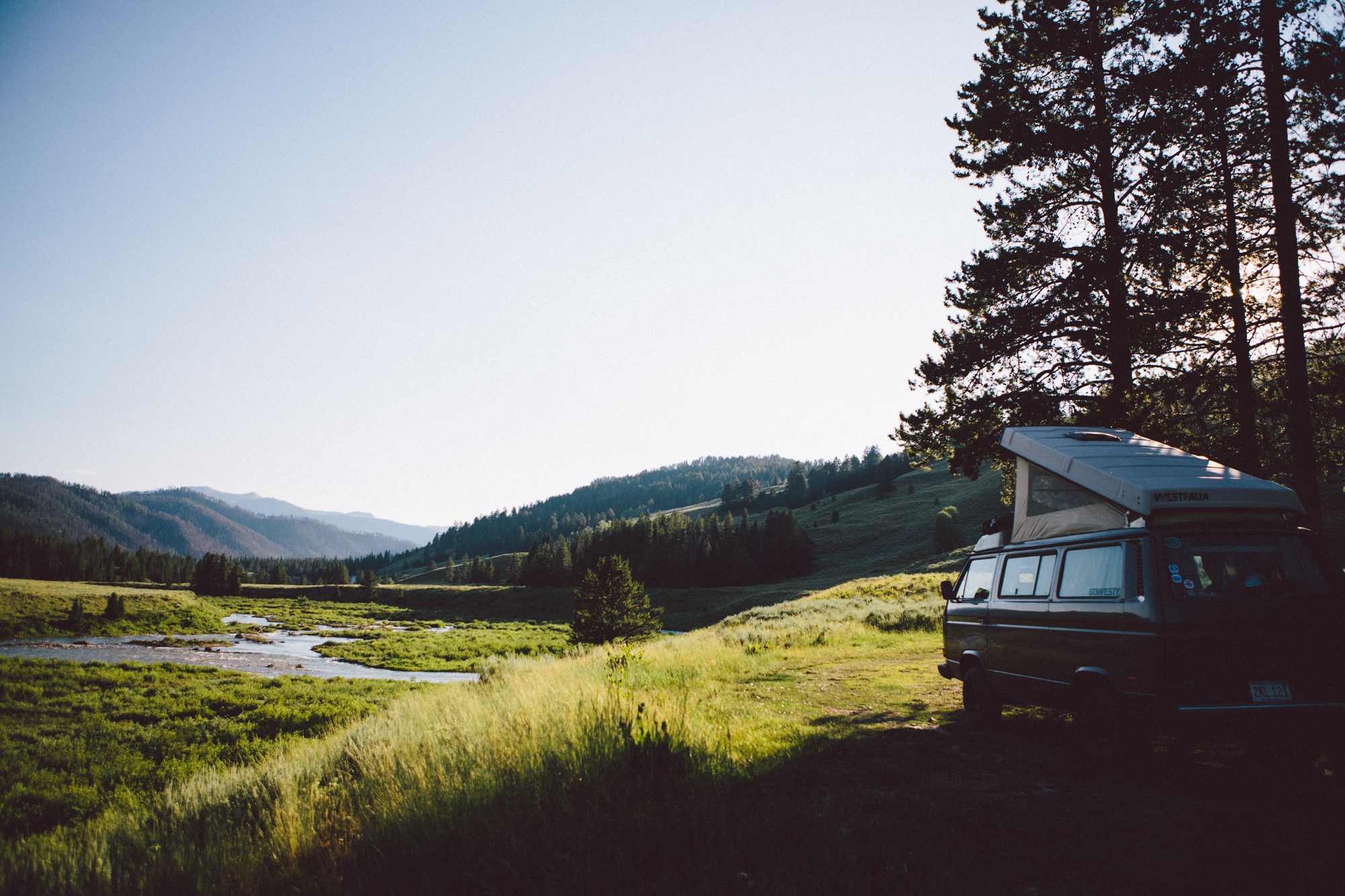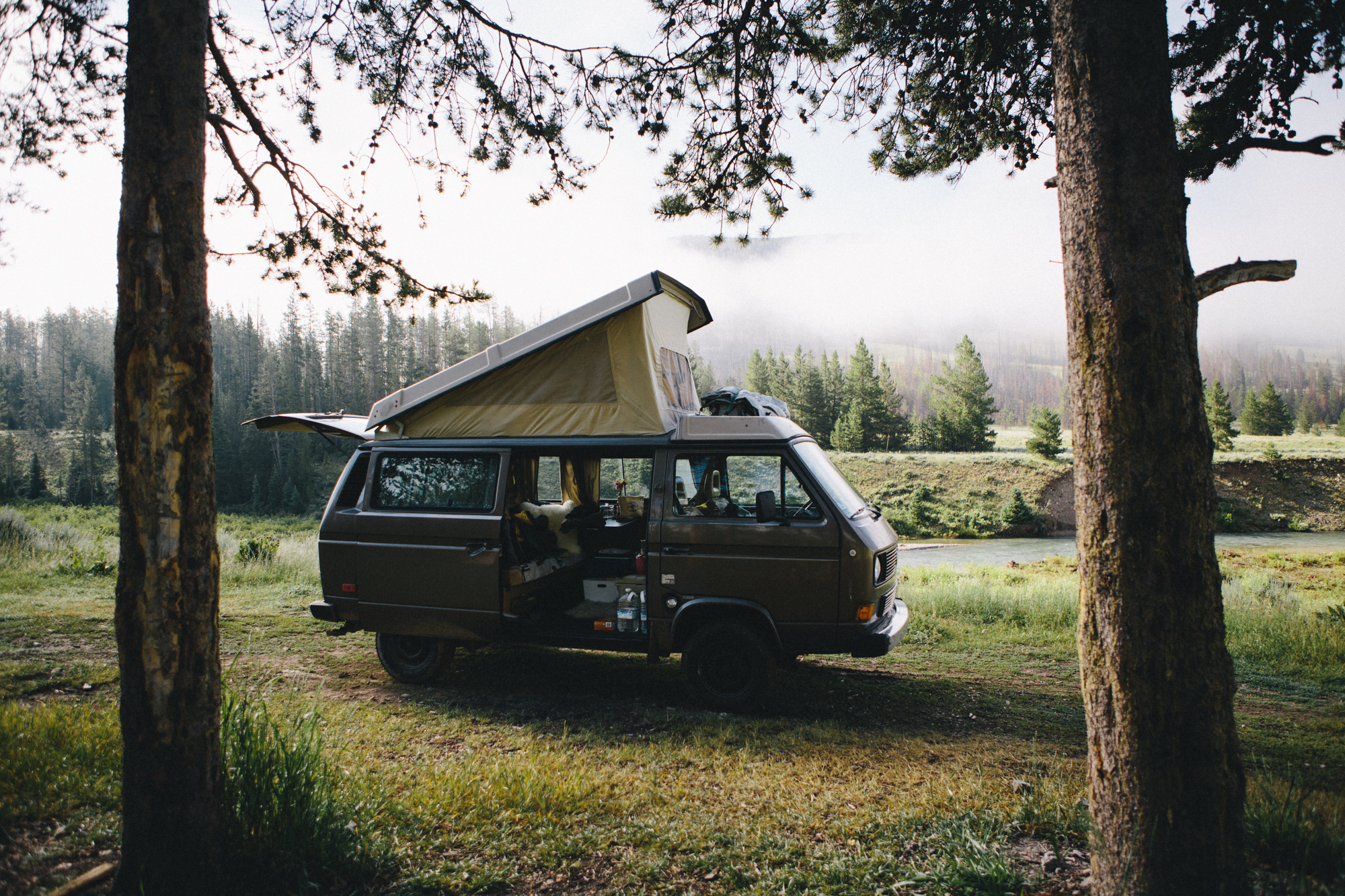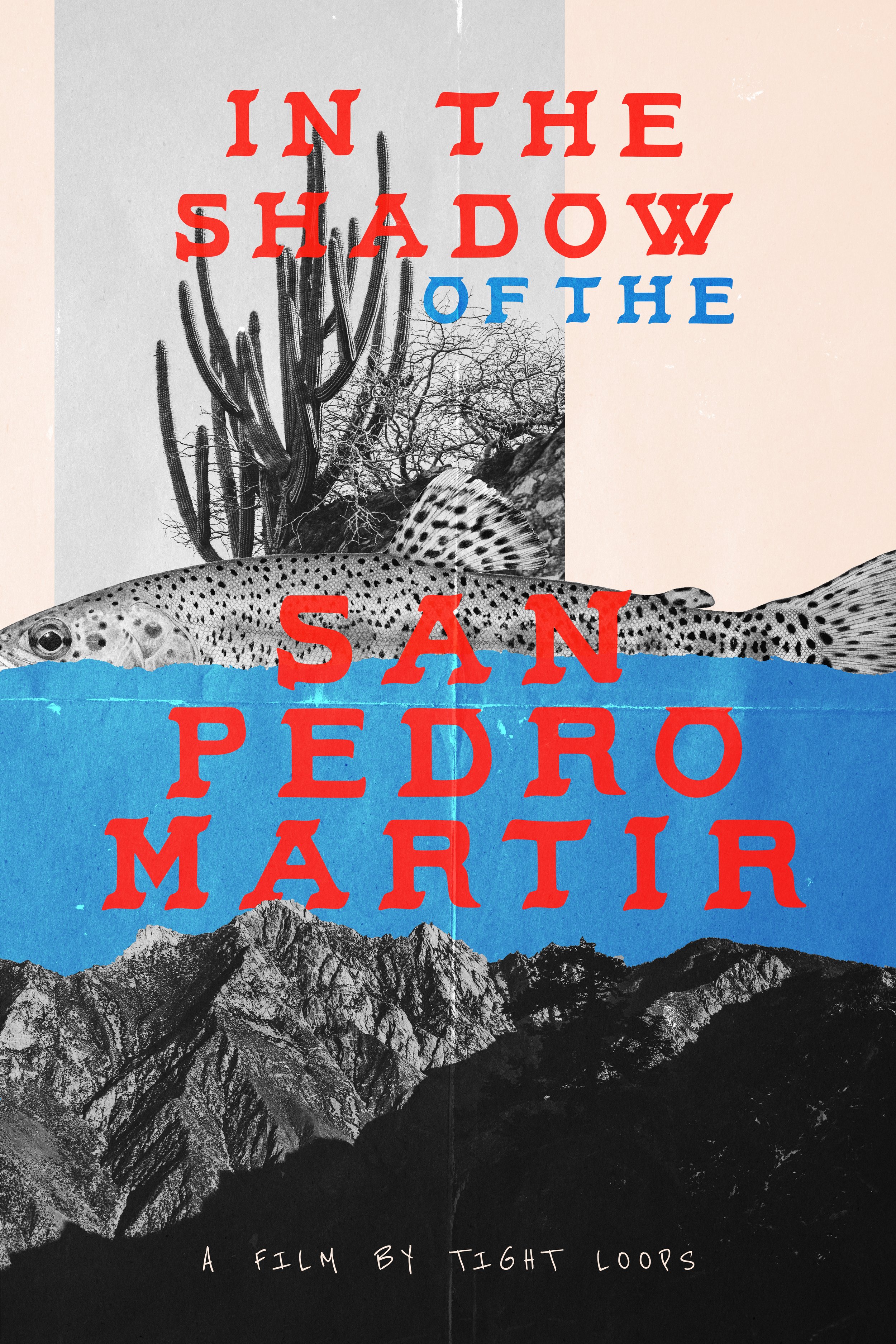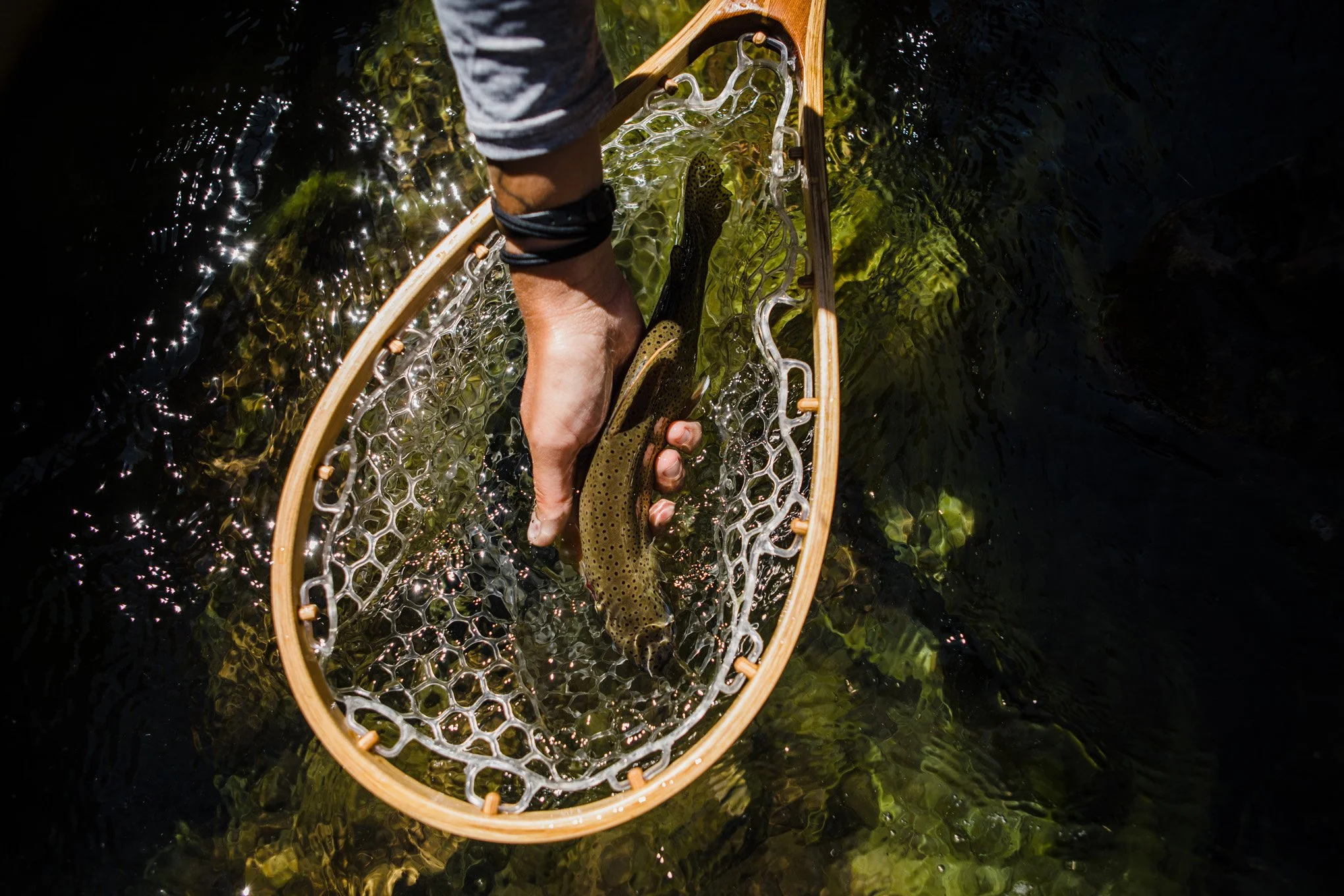New Water, Old Valleys, And The Beginning Of The End
We left Zion National Park at 7 PM. It was a hot, muggy 85 degrees, but we expected that. We’d waited all day for the temperatures to drop below 100. We still couldn’t explain what had happened to our van the day before, but if temperature was a factor then we weren’t going to take any risks. After 3 or 4 hours of driving without incident, our shoulders slowly began to relax as we breathed a heavy sigh of relief. We were back. Bullwinkle was back. We’d left in such a rush that we hadn’t bothered to figure out a place to camp, so we just drove until we could barely see straight and pulled into a highway truck stop.
We were up by sunrise and back at it again. It almost seemed like if we could make it to Yellowstone we’d be safe, and everything would fall back into place. Later that afternoon we’d enter Wyoming by way of brief passage through Idaho’s southeastern corner. We started feeling butterflies in our stomachs as we wound our way across Highway 89. Our goal for the summer was to make it to the Greater Yellowstone Ecosystem, and after a month of travel we were finally arriving. In some ways we were glad for the experiences we’d had thus far, but simultaneously couldn’t help but ask ourselves why we’d taken so long. We followed the serpentine Snake River into Jackson to stop and get our bearings. Despite having spent a lot of time in Yellowstone and The Tetons we’d neglected the immediate area surrounding them the last time we were there. We decided that this trip would be different. I had set a goal for myself to catch a Snake River fine spotted cutthroat; a species which until that point had eluded me, perhaps because it is native only to the Snake River drainage; an area which we’d spent very little time exploring. The Snake River proper is a large and powerful river, which by the time it reaches Jackson Hole has already gained significant momentum. With wading the main stem off the table, we needed to find a suitably small tributary if we were going to have a shot at a fine spotted cutty. A friend from afar pointed us in the direction of a creek a little farther south, that although we are sworn to secrecy, I will say is a tributary… of a tributary… of The Snake. The banks were lined with accessible and free National Forest camping, so we parked the van on a hilltop site overlooking a particularly attractive meadow and settled in to what we hoped to be several glorious days of camping and fishing.
The water seemed high for what we’d expected, but hell, it was mid July, and we thought for sure things must have settled into average summer flows by then. We would come to find out several days later, after encountering some locals on the water, that it was at least twice as high as normal for that time of year, and they would deem it “nearly unfishable”. Not knowing any better, we would spend several days flogging the water with dries hoping to see a big cutty come exploding out of the white water. No such luck. It was hard to complain however, seeing as how our camp site was one of the most beautiful we’d ever been in, and we spent the evenings picking wildflowers and watching a mated pair of sand hill cranes teach their fledging chick to fish in the calmer pools down below. I didn’t see them catch anything either.
Despite the high volume of water, it was deceptively clear. The access route was some 100 feet above the creek; so scouting locations from the road always appeared more wadable than once we reached the water. Getting down was often a scramble, and on our last day there we were determined to reach a series of beaver dams on the opposite side of the river. From the road we could see a gravel bar that appeared to be no more than shin deep, and figured it would be a piece of cake. By the time we bushwacked our way down we were admittedly too determined to turn back, despite the fact that the first step off the bank plunged us almost waist deep. “You sure you got this? I think I can make it, but are YOU sure?” I asked Aimee. “yeah, I think so” she hesitantly responded. We elected to use trekking poles as wading staffs instead of linking arms (we’ve found that linking arms can actually hinder the process when you’re in swift current, and often times the correction needed to regain balance is blocked by your partners body position.) I took the lead allowing Aimee to stay in my wake. We’d only taken one step when I heard a shriek. I looked back and Aimee was in the water. She’d instinctively snatched a branch on the bank as she fell, which sent her legs straight back in the current and began filling her waders like a wind sock. Her hand was slipping as I whipped around and grabbed her by the collar to try and set her upright. The torque of pulling on her lifted my feet enough to be swept away by the current. “F**K!!!” I screamed as plunged in behind her. In a mad scramble we tossed rods and gear ashore, and floundered around in frantic dogpaddles to gain our footing and hoist ourselves back onto the bank. I’ve fallen in dozens of times (mostly due to my fish-crazed desire to cover lots of water fast instead of getting off the river to eat and rest in normal intervals). But Aimee has always been more cautious, and this was the first time she’d ever filled her waders. I’d always assured her that I’d catch her if she fell, but that’s not how things went this time. She was ghost-white pale, soaking wet, and shaking uncontrollably, partly due to the frigid glacial waters and partly due to the rush of adrenaline from a potentially life threatening episode.
We stripped off our wet cloths and dumped out our gear. Our dry bags had thankfully protected our combined $8,000 in camera equipment. Just as we were beginning to recover from our swim Aimee noticed something puzzling. “Wait where’s my phone?” We don’t get much phone service out west, mostly due to the fact that AT&T isn’t a popular carrier, but we’ll bring them on the water to use as cameras and send photos home to friends and family the next time we end up with a wi-fi signal. 99 times out of 100 Aimee’s phone would have been in her dry bag with her camera, or at least in a sealable dry pouch in her waders. But the gods of happenstance and absentmindedness had conspired against her, and she’d accidentally placed it in the adjacent pocket in her waders: the non-waterproof one. She turned the pocket upside down and out came her iPhone, riding a wave of cold river water. It was already too late; the phone had shut itself off, and was searing hot to the touch and vibrating uncontrollably. After a couple of minutes of much needed cussing we pulled ourselves together and assessed our options. We concluded that this might have been the best possible place to have ruined a phone because we were only half an hour outside of Jackson, which is probably the closet we’d been, and ever would be to an AT&T store. 2 hours and reasonable $80 down payment for a phone and case later and she was back in business. We drove back into camp and to our embarrassment discovered that there was a bridge crossing only a few hundred yards from where we’d fallen in. I think there’s a lesson about patience in there somewhere, but I doubt it’ll stick. Later that evening we’d fish the beaver ponds that nearly cost us everything, and discover that there weren’t any cutthroat there either. It was a beautiful way to spend a few hours, but we had to accept that for now the goal of catching a fine spotted cutty would have to wait.
We decided it best to head north into Yellowstone, where we’d heard the flows were much more agreeable for wade fisherman. Besides, one of our best shots at catching a Snake River cutthroat was Flat Creek inside the National Elk Refuge in Jackson, which wouldn’t open for the season until August 1st. The plan was to enjoy the park for a week or two then head back into the Teton/Jackson Hole area in early August to resume our mission. We stopped in Canyon Village for showers then continued on to The Lamar. We meandered through the Valley as the late afternoon sun warmed the resident bison herd. If there’s one single place on earth Aimee and I feel happiest being in, it would have to be the Lamar Valley. We were grinning ear to ear as we took turns spotting pronghorn, buffalo and coyotes. We spent the night at an old favorite of ours; Colter Campground just outside the northeast entrance where we were greeted by the same friendly host we’d had two summers earlier. We called it an early night so we could get into the park at sunrise and secure a spot at Pebble Creek campground for the next 3-4 days. We had no idea at the time that Bullwinkle wouldn’t make it that long, and we’d find ourselves limping out of the park, in silence, no longer able to count the buffalo through our tear filled eyes. Our summer was about to take a very painful, and unexpected turn…
























